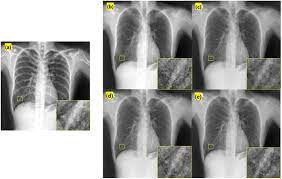In radiology field, talk of artificial intelligence (AI) has become commonplace. Many think AI, also known as machine learning or deep learning, may improve radiologists’ operations, enable quantitative radiology, and help identify genetic markers.
Radiologists are very active medical specialists. Any errors would be unaffordable. They must communicate with a broad spectrum of referring medical professionals, including neurologists, urologists, orthopedic specialists, and more. They must always be on their toes. What can AI offer these overworked radiologists to improve their performance?
What advantages does AI have for radiology?
There are various ways AI might improve radiologists’ skills even further. We will go through a number of these methods in this section. This is not a complete list. There are several other ways that AI might help radiologists. Later on, we’ll add to this area.
Specify a more specific diagnosis
The goal of many AI systems is to provide more information. This might be accomplished by quantitating image-related details or through radiology image annotation, which are now only reported qualitatively. Alternately, the software can incorporate normative values, enabling doctors to contrast patient outcomes with a mean based on a general population sample.
The problem with this benefit is that we are frequently unsure how to manage this additional information. What does a particular value indicate? What does it signify for the diagnosis when a patient deviates significantly from the general population? There are frequently no rules (yet!) on what this information implies or what a radiologist should do because we have limited experience with quantified information.
Take on rote, everyday tasks.
AI is not proficient in all areas. Not yet, at least. What are the best tasks that AI can now handle? Lessons are easy to do, for which we have a tonne of data, and that doesn’t call for mixing many various types of input. Hence, radiologists perform a lot of straightforward everyday jobs. This usually refers to the most tedious activities or tasks that radiologists find difficult.
Reduce both intra- and inter-observer variation
Even radiologists with the highest levels of training and experience can have different diagnoses. After a long day at work, anything new could capture the eye of someone refreshed in the morning. Additionally, the emphasis on the findings of various radiologists may vary.
This is a challenge for referring doctors since they must consider these variances when putting all their knowledge together to make a final diagnosis. AI algorithms can reduce or even eliminate this variation in radiologist reports.
How might AI aid radiologists in treating patients?
The best patient results are the ultimate goal of any diagnostic procedure. Since medical imaging is a growing component of the diagnostic process, it should have the same result as other diagnostic procedures: the patient’s benefit.
Therefore, we should do the litmus test and determine whether any AI tool used by radiologists to evaluate pictures benefits the patient in the long run. Expressed, the quality and efficiency axes may be used to conceptualize patient benefits. Both are covered below.
Quality improvement for improved patient results
AI has enormous potential to improve the accuracy of the picture readings we now use. For instance, by carrying out analyses that are not being carried out because they would take too long for radiologists to carry out manually. An illustration would be volumetric measurements of organs, where hand delineation would be too time-consuming yet might increase the accuracy of the diagnosis.
AI also plays a significant role in the advancement of precision medicine. We can more precisely evaluate what information suggests that particular therapies will improve patient outcomes when more patient data becomes available. Patient communication is another process stage that might benefit from some AI input.
Increasing effectiveness for the patient’s benefit
Although the level of treatment quality is crucial, excellent care is useless if the diagnosis takes too long. As a result, efficiency and quality should always be blended. Several ways AI may assist enhance productivity. The automation of time-consuming manual processes can aid in accelerating the diagnosing process.
Choose the ideal tool for medical image annotation.
Without question, machine learning has the potential to revolutionize the healthcare sector.
Wide-ranging potential applications include the whole medical imaging life cycle, from picture production and analysis through diagnosis and prognosis.
These labels may occasionally be used in machine learning (ML). However, their format is frequently in sync with ML research requirements, such as lacking instance IDs, characteristics, a labeling queue, or the proper forms for deep learning frameworks like Pytorch or TensorFlow.
Collaborating with a reputed medical annotation company that has previously expended the time and energy necessary to adhere to the numerous data formats, regulatory regulations, and user experience required for a successful medical AI project is generally advisable.
This post is originally published at click here








